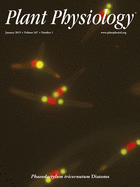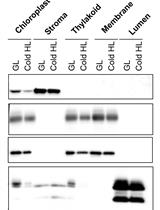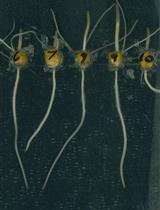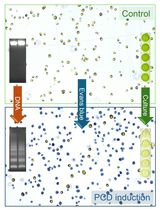- EN - English
- CN - 中文
Quantifying the Permeability of the Apoplastic Water Barrier in Cosmos Petals
秋英属花瓣中质外体水屏障渗透性的定量测定
发布: 2015年11月20日第5卷第22期 DOI: 10.21769/BioProtoc.1652 浏览次数: 7576
评审: Tie LiuArsalan DaudiAnonymous reviewer(s)
Abstract
The capacity of plants to minimize uncontrolled water loss is essential for survival in adverse and changing climatic conditions. In order to assess and compare the effectiveness of apoplastic barriers to water, the permeability of the barrier must first be quantified. Studies have accomplished this directly by quantifying tritium flux or indirectly by measuring the influx/efflux of water surrogates such as dyes, chlorophyll, and herbicides. Other studies have relied on comparative methods such as survival rates after drought. These methods rely on radioactive material, correlations, or qualitative comparisons. However, a quantitative method is necessary that directly measures water efflux and that allows easy comparisons within and between experiments, plant parts, plant species, and especially research laboratories. Here we outline in detail a gravimetric protocol first described by Schönherr and Lendzian (1981) that can be set up in less than half a day and completed in one to ten days depending on the plant barrier. This approach has been used in numerous studies on leaf and fruit cuticles and recently also on petals from cosmos (Cosmos bipinnatus; Buschhaus et al., 2015).
Materials and Reagents
- Leaf punch (12 millimeter diameter)
- Syringe (10 ml)
- Syringe (1 ml) with needle
- Pipette tip (100 µl)
- Pencil (unused)
- Sand paper (80 grit) (other grits may work but the author has not tested them)
- Tape (3M, Scotch®)
- Silica desiccant (Sorbsil Chameleon, BDH Prolabo)
- Plant material with minimum dimensions of 13 x 13 millimeters (e.g., ray petals 3-days post-anthesis from Cosmos bipinnatus cv. sensation pinkie; Seeds were obtained from Stokes Seeds)
- Silicon grease (Dow Corning Corporation, catalog number: Z273554 )
- De-ionized water
- Fertilizer (e.g., MiracleGro)
Equipment
- Cylinders (machined in-house with an 11 mm diameter opening and an internal capacity of at least 1 ml; Figure 1. Further details are provided in the ‘Notes’ section)
- Metal meshing (10 cm x 20 cm x 0.2 cm; 0.7 cm hole diameter; 0.5 holes cm-2)
- Plastic box with tight fitting lid (10 cm x 20 cm)
- Incubator (Thermo Fisher Scientific, model: Isotemp 210 )
- Balance (Sartorius AG, model: CP1245 )
- Computer
Software
- Spreadsheet software (e.g., Microsoft Excel)
- Data logger program to transfer balance data directly to computer (optional)
Procedure
文章信息
版权信息
© 2015 The Authors; exclusive licensee Bio-protocol LLC.
如何引用
Readers should cite both the Bio-protocol article and the original research article where this protocol was used:
- Jetter, R. and Buschhaus, C. (2015). Quantifying the Permeability of the Apoplastic Water Barrier in Cosmos Petals. Bio-protocol 5(22): e1652. DOI: 10.21769/BioProtoc.1652.
- Buschhaus, C., Hager, D. and Jetter, R. (2015). Wax layers on Cosmos bipinnatus petals contribute unequally to total petal water resistance. Plant Physiol 167(1): 80-88.
分类
植物科学 > 植物生理学 > 非生物胁迫
您对这篇实验方法有问题吗?
在此处发布您的问题,我们将邀请本文作者来回答。同时,我们会将您的问题发布到Bio-protocol Exchange,以便寻求社区成员的帮助。
Share
Bluesky
X
Copy link













